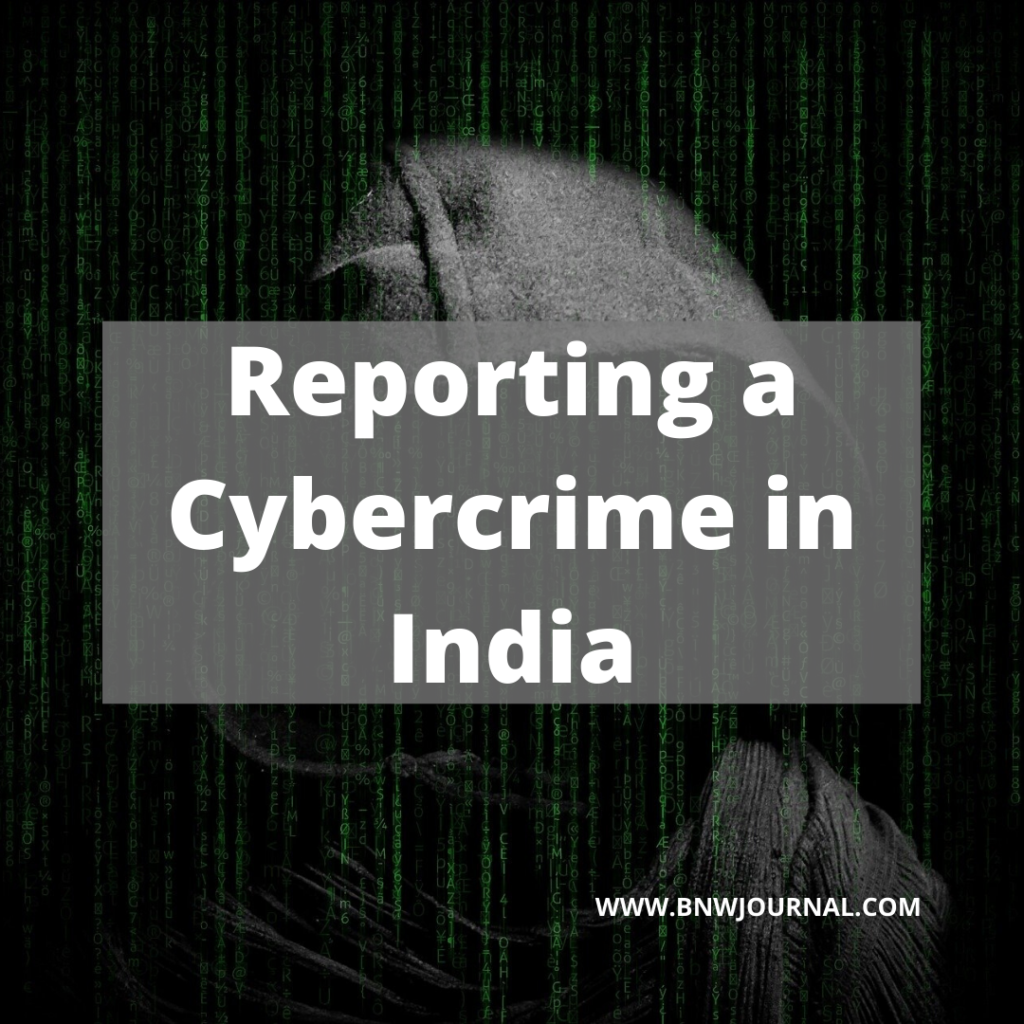![]()
Introduction
In the last two decades, the use of the internet and information technology has grown dramatically. This has inadvertently resulted in exponential growth in cybercrimes. The debate continues as to whether the rapid technological advancement is a boon or a bane.

According to the 2019 NortonLifeLock Cyber Safety Insights Report, a survey discover. That nearly 70% of Indians are worry that their identities will be stolen. However out of that 63% of Indians do not know what they will do if their identity is stolen.[1] It is also revealed that 4 out of 10 consumers have experienced identity theft. Rs. 1.24 trillion is the amount lost in India in the past 12 months due to cybercrime. It is also to be noted that this amount accounts only for the number of cases that were officially reported.
There needs to be an increase in the awareness as to the redressal mechanism. If an individual falls victim to cybercrime.
Kinds of Cybercrimes
- Identity Theft: When an individual’s personal information is stol. With the intent of utilizing their financial resources in that individual’s name. Such crime is an identity theft.
- Violation of Privacy: When a person intentionally or knowingly captures, publishes, or transmits the image of another person’s private area. Without their consent. It is a violation of privacy.
- Hacking: Hacking is one of the most widely use cybercrimes. When a person gains access to another individual’s computer or other electronic devices for malicious purposes, it is hacking.
- Cyberbullying: When a person defames, harasses, or intimidates another person online on any social media or otherwise, the person is to be cyberbullying.
- Defamation: When an individual or an organization makes a statement online. With the intent to defame or cause harm to the reputation of another, he is committing defamation.
What are cyber cells?
Cyber cells are a fast track solution for cybercrimes. Criminal Investigation Departments of different cities in India have established these cyber cells to handle the issues of only criminal activity which is in relation to the internet. Cybercrimes and their penalties are enlist and govern under the Information Technology Act, 2000.
How to file a Cyber complaint
- Offline: The IT Act states that any crimes committed online have global jurisdiction and can subsequently be complained against in any cyber cell. When filing a complaint to the cyber cell, the victim will have to written complaint. Contained in the written complaint the victim will have to provide their name, the contact details, the address for mailing. The complaint needs to be address to the Head of the cybercrime cell of the city where the victim is filing the complaint. The complaint should also be comprise of an account of the incident and contain the require documents. In case the victim does not have access to the cyber cell, the matter can be report to the local police station by filing an FIR. The complaint against cybercrime can also be file online.
- Online: The web portal on which the victim can file a cyber complaint, in case of unavailability of a cyber cell, is https://cybercrime.gov.in/Accept.aspx. There two kinds of cybercrimes that are distinguish on the portal. One is when you report offense against women/child and the other is to report other types of cybercrimes. Upon clicking on report crime, you will be direct to the next page where you have to click on ‘file complaint’. Subsequently, you will be ask to fill in your details, upon which you will be ask to enter the complaint/incident details. In the case of a hacking, the following documents will be ask to be produce:
- The server logs.
- A soft copy of the hacked webpage as well as a hard copy.
- If there was any breach of data on the webpage, a soft copy of the original data and the compromised data.
- Details of who had access to the computer or information of the victim.
- List of any suspects.
- All relevant data and documents to answer the following questions:
- What data is breached?
- Who could have compromised the system?
- When did the breach occur?
- What might have been the motive for the breach?
- How many systems have been breached?
- Where is the impact of the attack?
Conclusion
Considering the exponential growth in the uses of the internet, and keeping in mind that not every individual is tech-savvy, it is unavoidable that people fall prey to cybercrimes. However, it is the duty of law enforcement to ensure a smooth and speedy process of redressal. As a result, cyber cells were introduced to ensure speedy one-track solutions to victims. The fact that the complaints can also be filed on an online portal makes it that much easier for a cybercrime victim to seek redressal. With changing times and rapid development in technology, it is imperative to ensure that legislation and law enforcement are at par with them.
References:
[1] https://economictimes.indiatimes.com/wealth/personal-finance-news/cyber-criminals-stole-rs-1-2-trillion-from-indians-in-2019-survey/articleshow/75093578.cms?from=mdr



0 Comments